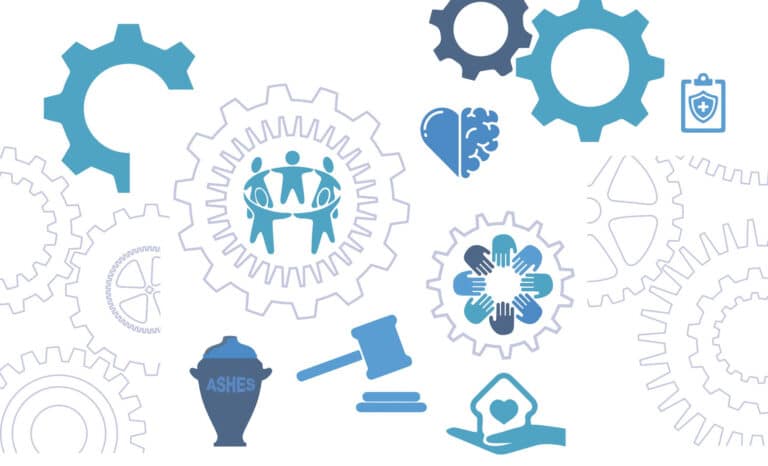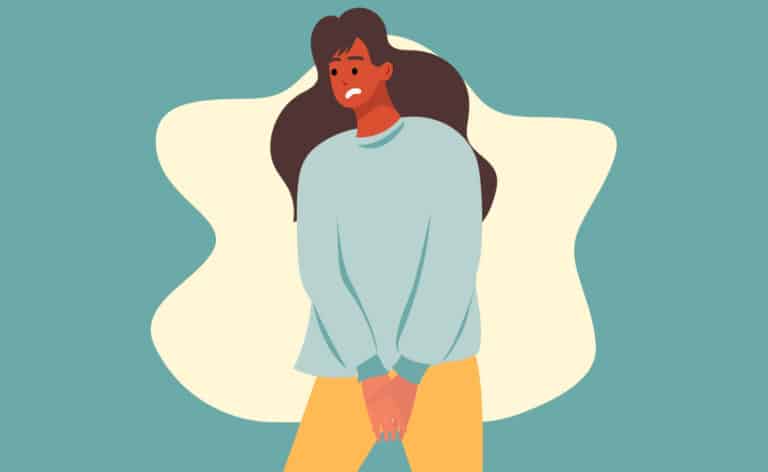Fixations on food and body image aren’t just a woman’s problem
Media and popular culture have defined unreal standards of beauty. For men, this often means six-pack abs and looking like Michelangelo’s David. But that ideal image can be destructive.
For Elgin resident Robert Allanson and many other men with eating disorders, the fixation on being lean and strong started in a somewhat healthy place, but over time became distorted and unhealthy.
Allanson began to tie his self-worth to his ability to work out more. When he received a compliment, it would bolster that association. His body image grew more and more distorted.
“Just the smallest amount of fat on my stomach would be a source of fear,” he says. “I started to become terrified of what would happen if I missed a workout. Would all the muscle I thought I developed from the long hours in the gym go away? What about the abs that I had chiseled out? I had no control over my own mind. Perfection became the name of the game.”
Disordered eating
“A lot of people diet as part of a workout plan, and it doesn’t develop into an eating disorder for everyone,” says Brad Smith, MD, medical director of eating disorders at Rogers Behavioral Health. “But for some it will, because they develop changes in their ways of thinking about weight and shape.”
In the United States, 10 million men will suffer from a clinically significant eating disorder at some time in their life, according to the National Eating Disorder Association. These disorders include anorexia nervosa, bulimia nervosa, binge eating disorder and other unspecified eating disorders.
“We see men go to extreme dietary restraint,” says Nicholas Farrell, PhD, clinical supervisor for Rogers Behavioral Health’s eating disorders program. Rogers provides residential treatment at its eating disorder center in Delafield, Wisconsin, as well as intensive day treatment programs in Skokie and other locations.
Eating disorders don’t just involve cutting fats, sweets and junk food. Men might engage in excessive exercising, often for prolonged periods or multiple times per day, while drastically limiting nutritional resources or taking extreme measures to avoid certain foods.
A mental health disorder
Eating disorders are a multiheaded monster. Along with extreme eating habits come unhealthy patterns of thought. Allanson says his eating disorder was as much about control as it was about food. “It was more the rules that I set into place. If I didn’t abide by them, I felt an intense, overwhelming anxiety.”
The diagnosis and treatment of eating disorders is often complicated by the presence of other mental health disorders. “Over 60 percent of people who are diagnosed with eating disorders also have anxiety, often in the form of obsessive-compulsive disorder,” Farrell says.
Co-occurring depression is also common and is present in 50 percent to 70 percent of those with eating disorders. Excessive exercise and substance abuse also frequently occur. The result is that treating someone with an eating disorder is as tangled and nuanced as the condition itself.
A team approach
“It’s critical to have a multidisciplinary team approach to treatment,” says Delia Aldridge, MD, CEDS, medical director of the Center for Eating Disorders at AMITA Health Alexian Brothers Behavioral Health Hospital in Hoffman Estates. This team often includes a psychologist, psychiatrist, dietitian and general physician. There are typically a variety of psychological and diet assessments taken into account, and patients usually meet with a therapist as well as an internist to assess mental and medical stability.
Farrell says that a fundamental objective in eating disorder therapy is to gradually reduce fear of certain foods or the rules in place surrounding certain foods. For example, Allanson had a rule of never eating fried or fast foods. Through exposure therapy, a patient is gradually exposed to the food they fear, eventually working up to eating it. “It’s all about helping the patient disconfirm the faulty expectations they have about certain foods,” Farrell says.
Often, patients will stay for an extended period at residential treatment centers such as Rogers Behavioral Health, which was one of the first in the nation to offer a men’s eating disorder program. The goal of residential treatment is to regain a healthy weight while working through the emotional and behavioral issues surrounding eating disorders. “For me, it was about restoring my body weight and changing the distorted thinking [and] the rules I had in place,” Allanson says.
But providing proper care to men with eating disorders is not easy for a multitude of reasons. For one, men often hide eating disorders more easily than women. “Men go unnoticed longer by family and doctors because they are
not necessarily trying to lose a lot of weight,” Smith says. “They don’t look as malnourished because they are focused on lean muscle mass building and obsessiveness about body fat.”
While treatment for eating disorders may lag for men, Aldridge says she has seen improvements. “When I started practicing 15 years ago, there were only two residential treatment centers for eating disorders in the entire country that would take males, but now I can name at least six in the Midwest alone.”
The next step is much harder: reversing decades of cultural stigma around eating disorders — for both men and women — so individuals can reach out for help and support.
“We look at people with eating disorders or mental illness as broken, as weak,” Allanson says. “Some of that residual crap from society still lingers and requires consistent work to address self-esteem to avoid relapsing into old patterns. The key for me is open and honest communication with my wife and family, being fully present, recognizing how I am feeling in each moment and simply allowing myself to truly enjoy life.”












